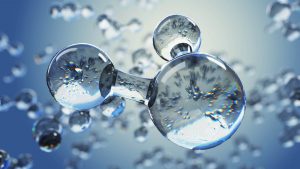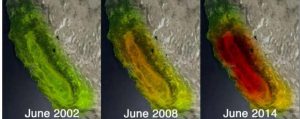WATER
Why water?

In terms of making a difference to people and planet, delivering high purity, low cost water at low energy has an enormous impact.
By 2015, water had become the number one problem on the World Economic Forum’s list of crises. “Global water crises – from drought in the world’s most productive farmlands to the hundreds of millions of people without access to safe drinking water – are the biggest threat facing the planet over the next decade.
This is the sobering finding of the World Economic Forum’s Global Risks 2015 report. It is not only the fourth time water has made the annual list that ranks the greatest risks to economies, environments and people, but the first time that water has moved into the top position for impact.”
https://www.weforum.org/agenda/2015/01/why-world-water-crises-are-a-top-global-risk/
Scientists identified this problem developing during the 1990s. In the years since the 2015 World Economic Forum’s assessment, the situation has only worsened. Many people today are still not aware of the Groundwater Crisis. NASA’s GRACE satellite program shows the worldwide drawdown of “fossil” water supporting the world’s agriculture and feeding 9 Billion people. https://www.nasa.gov/mission_pages/Grace/index.html
Dr. Jay Famiglietti, who has led the analysis of the GRACE data, explains the implications of the Groundwater Crisis – a crisis that is only beginning to be properly understood.
DR. JAY FAMIGLIETTI: Drought vs. Chronic Water Scarcity and Implications for Sustainability
As the supply of inexpensive fresh water dwindles, as water shortages grow and as water becomes increasingly polluted, there seems to be no choice but to turn to conventional technologies to clean up more contaminated source water. If this were the case, energy use would increase and with that, the cost of water would rise. Pure, abundant, low cost water is the basis of human health, prosperity and peace. Even with strong conservation measures, the higher cost of water would have a serious and negative impact on the ability for the world to feed itself, to maintain health, and to live in peace.

Water and energy are virtually the same thing. As water professionals appreciate, it takes energy to move water from one place to another. It takes energy to clean up contaminated water. The smaller the contaminants, the more energy needed to remove them. Salt removal – desalination – takes the most energy.
The world’s energy use would soar. Conventional technologies are more energy intensive, and therefore more costly. Although many creative people have worked to drop costs and energy consumption over the years, the higher price tag on this fundamental necessity will have a major negative impact on the world’s ability to have water for basic needs, to grow crops and to manufacture goods.
At present, 19% of all California’s electricity goes to moving water – not desalinating, not cleaning, not remediating, just moving water. Are we looking forward to a future in which desalinating water, cleaning water, and moving water takes similar or larger percentages of the world’s energy budget?
The Technical Challenge of Water
Given the world’s needs, an incremental improvement to existing technologies will not solve these problems. Only something transformational will make enough difference.
Water chemistry is brutal. Cleaning up water to high standards – water purification, wastewater remediation and desalination – are significant technical problems all on their own. To do this at lower energy and at lower costs is a major technical challenge. A water source may contain any of approximately 500,000 contaminants. The contaminant mix may change with the seasons….or even over the course of a day. Surprise events – the neurotoxins in Toledo’s water supply, the release of radioactive materials from Fukushima, the Gold King Mine spill in Colorado – add new problems without warning.
The issue is not just the complexity of contaminant removal, but also issues of fouling and scaling, and other operational requirements. Many technologies that look promising in the lab fail once they encountered the complexities of the operating environment.

The long sought goal of membrane science has been to achieve high specificity at low energy, in other words: to remove the very small contaminants at low energy, which up until now has been a contradiction. What would be needed would be an ultrathin membrane to deliver low energy, and atomic specificity in design to achieve both the removal of the small contaminants and the control to prevent fouling and scaling.
The first Covalent 2D membranes – one-atomic-layer-thick – were built in 2003 and made in commercial sizes at that time. Now having gone through the scale-up process – finishing school for chemical constructs – the first water products are on track for delivery into the field. Agua Via Ltd, led by some of the water industries luminaries with experience throughout the world in everything from the large and most sophisticated plants to building wells in African villages, will take the membranes to market.

The Covalent filtration membrane cartridge is essentially an entire water treatment plant in a box. The membrane is designed at the atomic scale to the water industry “wish list” specifications for ultra-high purity, ultra-low energy and ultra-low cost desalination and water purification from virtually any feedstock. The product is expected to massively reduce desalination energy, as well as capital and operating costs 50% over best practices. Up to a 99% energy reduction for purifications and wastewater remediation is anticipated to cut total water costs by 30% for easy feedstocks, and up to 75-80% for challenging purifications.
Multiple cartridges provide large volume agricultural water or serve cities. A cartridge the size of a matchbox will serve a household. By eliminating conventional systems’ pre-treatment systems, the total footprint drops. The cartridge now becomes the whole “water plant.” The small footprints enable distributed systems, and reconfiguring both the water and power grid by eliminating water transport requirements. This can revolutionize national-scale water strategies.
Agua Via Ltd, with some of the water industry’s most experienced team members, is taking the water membranes to market.
For More Information
Agua Via is bringing Covalent technology to the world of water with purification, desalination and wastewater products.
Learn more about the Purification, Wastewater and Desalination membranes at the Agua Via Ltd website: http://www.aguavia.com
Contact Agua Via directly at: contact@aguavia.com


